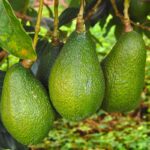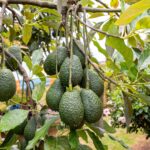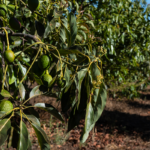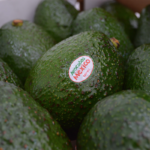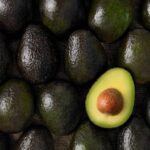The Hass Horn: second quarter U.S. avocado supply outlook

By avocado expert Avi Crane
 For those of us who have spent our entire careers in the avocado industry, its current condition is nothing less than remarkable. When avocado production in California reached 21 million cartons in 1987 - despite a devastating freeze at the start of the harvest - that volume caused a market crash. Some of the less resilient in the industry left for what they hoped would be greener pastures.
For those of us who have spent our entire careers in the avocado industry, its current condition is nothing less than remarkable. When avocado production in California reached 21 million cartons in 1987 - despite a devastating freeze at the start of the harvest - that volume caused a market crash. Some of the less resilient in the industry left for what they hoped would be greener pastures.
The first quarter of 2013 proved once again that the per capita demand for avocados in North America has been underestimated. Today, 70 million annual cartons do not meet that demand. Growers in the six industries currently supplying the North American market have invested in growing, harvesting, packing and shipping protocols that assure the consumer of a quality, healthy and safe to consume Hass avocado.
Furthermore, the work of the Hass Avocado Board and affiliates with their retailer, food service and wholesale partners has resulted in a mostly stable market environment for the avocado industry that allows every player to achieve respectable margins while providing the consumer in North America with a reasonably priced avocado every day of the year.
Second quarter outlook
Mexico
Hass from Mexico (from Michoacán now and also from Jalisco in the future) will continue to be the primary source of Hass avocados in North America in the second quarter and the foreseeable future.
The Mexican Hass industry demonstrated during the Super Bowl promotion that its infrastructure is more than capable of supplying the market with avocados during peak promotion periods.
In this quarter, weekly shipments of Mexican Hass to the U.S. will be in the 30 million pound range (700 trucks). Field prices will be 20-50% higher than we have seen since last fall. This is mainly as a result of fewer growers harvesting a similar volume of avocados. Historically, when the harvest moves to the highlands (Tancitaro), there has been a price increase. 2013 is following a similar pattern.
The most important development for the second quarter is the newly-formed entity "Avocados from Mexico" that will coordinate all Mexican avocado industry industry advertising, promotion, and public relations. Avocados from Mexico will be jointly funded by the Mexican Hass Avocado Import Association (USDA Hass Avocado Board Affiliate) and APEAM Mexican Avocado Producers and Packers Association).
When Tim O’Connor, who for the past 14 years has been president/CEO of the U.S. Potato Board, begins his leadership of the new organization, he will have the largest budget ever available to one organization for the promotion of the Hass avocado. Mr. O'Connor will be able to utilize the current staff and outside agencies that have been part of the success story of the avocado industry for several years.
When this author was a member of the MHAIA Board, he pushed for coordination between the two organizations. What has finally been established is above and beyond my expectations. I wish Mr. O'Connor great success - he certainly comes well qualified to the position.
Freight on Board (FOB) prices for the second quarter will reach levels that provide the avocado grower in California returns that will merit harvest. The on-tree crop is one of the largest in history. Therefore, fruit size is below normal levels as we begin the second half of March 2013. Most of the fruit is size 60 and smaller.
Due to cash-flow requirements, the desire to thin out the fruit on the tree, and the Cinco de Mayo promotion period, I anticipate that the weekly Hass harvest in California to reach 7 million pounds in April (175).
In May and June, the weekly volume should reach close to 10 million pounds. Since the beginning of the century, increased competition from imported avocados has coincided with record returns for the California Avocado industry. I expect that 2013 will be another record for the California avocado Industry.
Peru
The past season was a challenge for Peruvian avocados in the North American market. Producers received much higher returns from alternative markets. The bright side of the 2012 season was that for the most part retailers were pleased with the Peruvian Hass. For the current season, I predict that Peruvian avocado exporters will work closely with their receivers in the U.S. to develop programs with retailers and avoid the spot market. In the second quarter, Peru might export 50 containers a week to the North American Market.


















